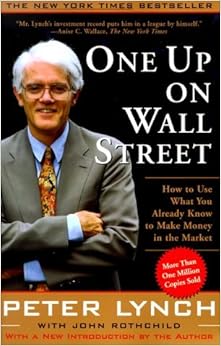
Background
Peter Lynch is an American investor and manager of Magellan Fund between1 1977 to 1990. During his period he averaged an annual return of 29.2%. In his book is describe where he gets stock ideas from everyday life and common sense. For example if you are in the auto industry, you will have more knowledge than average people in the auto industry and auto related industry (ex. steel, oil, auto-components, tires, auto-finance, and etc). Then you should look at stocks in these industries.
You will be able to see cyclicals turn around before other people, or spot opportunies that average people won’t see.
6 Different Types of Stock
Peter lynch also group stocks into 6 different main categories.
Slow Growers
These are usually large companies that are generally older and expected to grow slightly faster than the country’s gross national output.Lynch is not against these companies, he simply says not to expect huge returns on these companies. For example KO and GE.
Stalwarts
The stalwarts are companies that don’t do a lot of shaking during recessions and economic downturns. For example, McDonalds.
Fast Growers
You don’t need to have a fast growing industry to find a fast growing company. These types of investments are Lynch’s favorites, as many new, fast growing companies can turn into 10 to 40-baggers or more (in Lynch’s experience).
Cyclicals
According to Lynch a cyclical company is one ‘whose sales and profits rise and fall in regular if not completely predicable fashion.”
Turnarounds
Companies that can barely make it to the bankruptcy lawyers before completely dying are candidates for the turnaround category.
Asset Plays
These companies have a certain known asset that will set it apart from other companies in the future. The asset might be cash or it might be an island full of oil off the coast of a country. Patience is the most important aspect for investing in these companies, because it may take a while before you see any profits come from it.
Conclusion
Overall this is a great book for beginner investors. He also mention some metrics to look at to avoid disaster. Also he focus a lot of growth. An formula he uses is (Dividend yield + Growth) / PE Ratio. Some people refers to as PEG ratio.